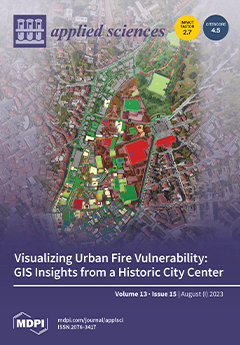Donkey milk represents an efficient substitute for human milk in infants’ diets being unlikely to cause allergic reactions. In this study, different donkey milks were collected at two lactation times (T
0 and T
1), subjected to freezing–thawing and freeze-drying, and analyzed
[...] Read more.
Donkey milk represents an efficient substitute for human milk in infants’ diets being unlikely to cause allergic reactions. In this study, different donkey milks were collected at two lactation times (T
0 and T
1), subjected to freezing–thawing and freeze-drying, and analyzed by Inductively Coupled Plasma–Optical Emission Spectroscopy (ICP-OES) and ATR-FT-IR. The data collected on freeze–thaw (FT-) and reconstituted (R-)milks were investigated by ANOVA–Simultaneous Component Analysis (ASCA) and Principal Component Analysis (PCA). The following concentrations (µg/mL) for FT and R-milks, respectively, at T
0, were found: Ca: 712 ± 71, 600 ± 72; Fe: 0.7 ± 0.3, 0.1 ± 0.1; K: 595 ± 49, 551 ± 59; Mg: 75 ± 5, 67 ± 4; Na: 117 ± 16, 114 ± 16; P: 403 ± 30, 404 ± 38; Zn: 1.6 ± 0.2, 1.6 ± 0.3. At T
1, the concentrations (µg/mL for FT and R-milks, respectively) were: Ca: 692 ± 60, 583 ± 43; Fe: 0.13 ± 0.02, 0.13 ± 0.03; K: 641 ± 71, 574 ± 61; Mg: 72 ± 4, 63 ± 1; Na: 116 ± 9, 109 ± 8; P: 412 ± 30, 405 ± 24; Zn: 1.6 ± 0.3, 1.6 ± 0.3. ASCA demonstrated the treatment has a substantial effect, and PCA revealed that the largest quantities of metals, specifically Fe, Mg, and Ca for T
0 and K, P, and Na for T
1, are present in the FT-milk samples. The IR spectra of FT- and R-milks revealed no macroscopic changes among them or between lactation periods, indicating this technique may not suitably capture variability in lactation or conservation processes in donkey milk. Despite the relatively small sample size, this study offers insight on the mineral composition changes in donkey milk and emphasizes the significance of milk preprocessing and the lactation period on it.
Full article





